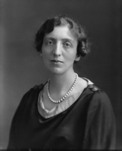

Web design © Graeme de Lande Long. Terms & Conditions.



Community Website
Scaynes Hill Village
Brief History of WI - celebrating 95+ years in Britain
05 February Posted by Pat Barnett with thanks to Shadforth WI
The first Women's Institute, which originated in Canada in 1897, was formed in Stoney Creek, Ontario, Canada, as a branch the Farmer's Institute. It was inspired by a talk given by Adelaide Hoodless, a leader and educationalist, who is honoured as the founder of the Women's Institute Movement though she played a very limited role in its development.
Adelaide's youngest son died at the age of fourteen months in 1889, apparently due to an intestinal infection caused by drinking contaminated milk. She felt that education could help prevent more deaths and for the rest of her life she campaigned for domestic science to be taught in schools and colleges. She spoke on the subject all over Ontario. In addition, Adelaide was as an official and important member of another, worldwide, women's movement, The National Council of Women. It was thought that a Women's Institute could enable women to enjoy advantages similar to those given to the men at the Farmer's Institute. However, we like to think that the Women's Institute still has a great deal to offer.
The AOS was formed in 1901 to help farmers set up co-operatives, as a way of revitalising the failing farming industry. John Nugent Harris had tried to get the AOS to involve women who played an important, often unpaid, role in agriculture but had no training and no say in what was going on. Madge Watt had been closely involved with the Women's Institute in British Columbia assisting the Provincial Department of Agriculture to form Women's Institutes. Now she had come to live in England she was keen to extend the WI Movement to Britain. The first WI was formed at Llanfairpwll, Anglesey in September 1915.
First Women's Institute Hall in Britain - 1915
The Women's Institute Movement in Britain started in 1915, under the auspices of the Agricultural Organisations Society (AOS). The catalyst was the meeting, in February 1915, of AOS Secretary John Nugent Harris and Canadian, Madge Watt, who was to be given the role of setting up Women's Institutes in Britain.
John Nugent Harris and Madge Watt decided that Women's Institutes were just what was needed to revitalise rural communities and to involve women in producing more food for the war-torn country. John Nugent Harris persuaded a somewhat reluctant AOS to appoint Madge Watt, at first for just 6 months, as an Organiser to try set up Women's Institutes. Colonel Stapleton Cotton, a Vice Chairman of AOS and Chairman of the North Wales branch of AOS, invited Madge Watt to come and speak at a conference on June 15th at Bangor University College and he and his wife were so impressed by what Madge had to say that they invited her, the very next day, to meet women from their village, Llanfairpwll on Anglesey. At this meeting the women decided that they would like to start a WI. Mrs Stapleton Cotton became the first WI President, a post she held until her death in 1924.


<< Back to News

After hearing her talk at a meeting with the wives of members of the Farmers' Institute, Erland Lee, a local farmer, and his wife Janet decided to set up a new organisation. They had previously been school teachers and understood the value of education. The success of the WI was largely due to their hard work. They organised affiliation to the Farmer's Institute and recruited the support of the Minister of Agriculture and therefore government cooperation and support. Janet Lee was elected to the first WI committee and was one of the women who visited other Farmer's Institutes to encourage the formation of more Women's Institutes. The WI still exists in Canada.
Erland & Janet Lee


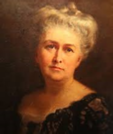
Adelaide Hoodless
Encouraged by this enthusiastic response Madge Watt went on to form further Women's Institutes, first also in Wales at Cefn, and Trefnant, both in Denbigshire, in October 1915, and then in England at Singleton, Sussex (W) and Wallisdown Dorset in November 1915.
Singleton and East Dean is still thriving to this day.
Sussex is also the oldest County Federation formed in 1917, divided into West and East in 1919, this area covers very rural areas from The South Downs to the coast. There are 108 WIs in villages and towns all very different, some with a large membership and others smaller.
By 1916, with 40 Women’s Institutes it was obvious that the WI Movement was going to thrive and the AOS set up a Women's Institute Sub Committee to support Madge Watt and the newly formed institutes. They appointed 32 year old Lady Denman as Chairman.
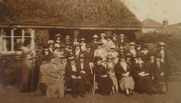
WI at Llanfairpwll - 1915
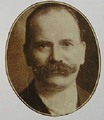
John Nugent Harris
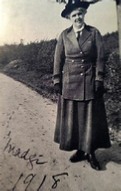
Madge Watt
In 1917, with 137 institutes up and running, neighbouring Women's Institutes in Sussex decided to meet together and formed the first Federation. The WI became administratively independent in October 1917 when the National Federation of Women's Institutes (NFWI) was formed, the rules were adopted and an executive committee elected, led by Lady Denman as National Chairman. Lady Denman held this post until 1946 and the WI College, opened just after she retired, was named Denman College in her honour.
During the First World War the WI encouraged countrywomen to get involved in growing and preserving food to help to increase the supply of food to the war torn nation. They were usually based in rural areas. During the Second World War they again played a major role and continue to do so.
The Women's Library, based in London, holds the National Archive Collection for the NFWI. Charlotte Dew, Project Curator, said: "I'm surprised by the quantity, quality and diversity of the material in the WI archive, contained in over 300 archive boxes. I find it of particular interest since it shows how the WI helped women to become active citizens in the years straight after women received the vote."
"The history of the suffragette movement is common knowledge, however many are not aware of the impact the WI had on the struggle for women's rights at the beginning of the 20th century."
Lady Denman
